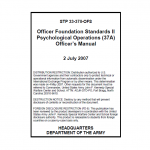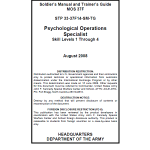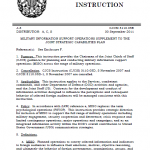This report describes the emerging areas of information operations, electronic warfare, and cyberwar in the context of U.S. national security. It also suggests related policy issues of potential interest to Congress. For military planners, the control of information is critical to military success, and communications networks and computers are of vital operational importance. The use of technology to both control and disrupt the flow of information has been generally referred to by several names: information warfare, electronic warfare, cyberwar, netwar, and Information Operations (IO). Currently, IO activities are grouped by the Department of Defense (DOD) into five core capabilities: (1) Psychological Operations, (2) Military Deception, (3) Operational Security, (4) Computer Network Operations, and (5) Electronic Warfare. Current U.S. military doctrine for IO now places increased emphasis on Psychological Operations, Computer Network Operations, and Electronic Warfare, which includes use of non-kinetic electromagnetic pulse (EMP) weapons, and nonlethal weapons for crowd control. However, as high technology is increasingly incorporated into military functions, the boundaries between all five IO core capabilities are becoming blurred.
Read more →




